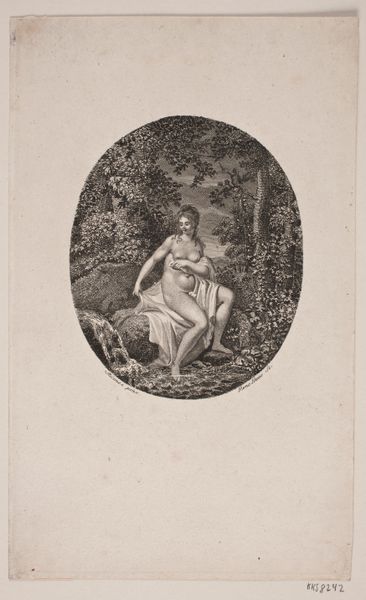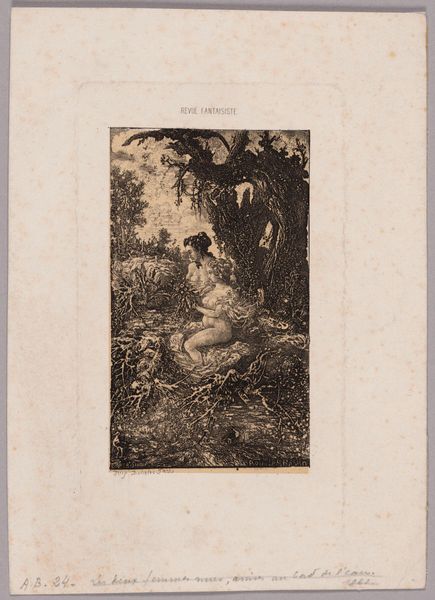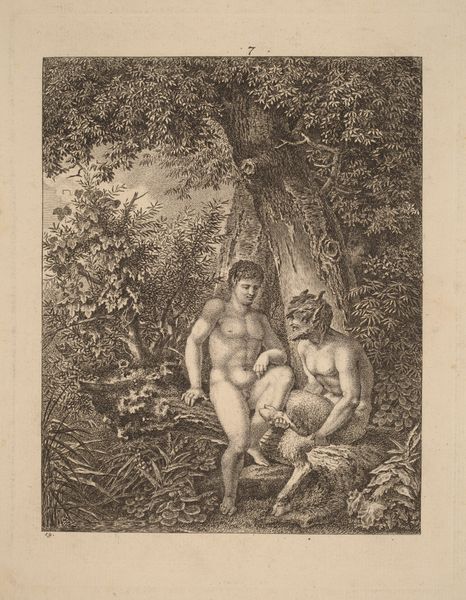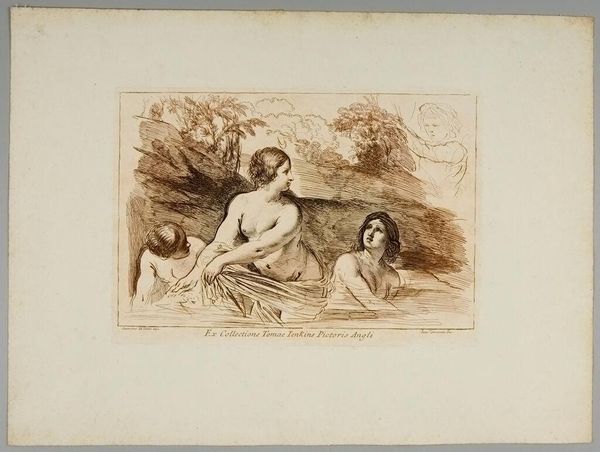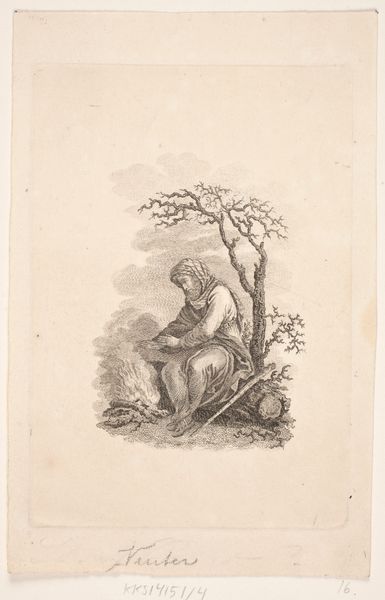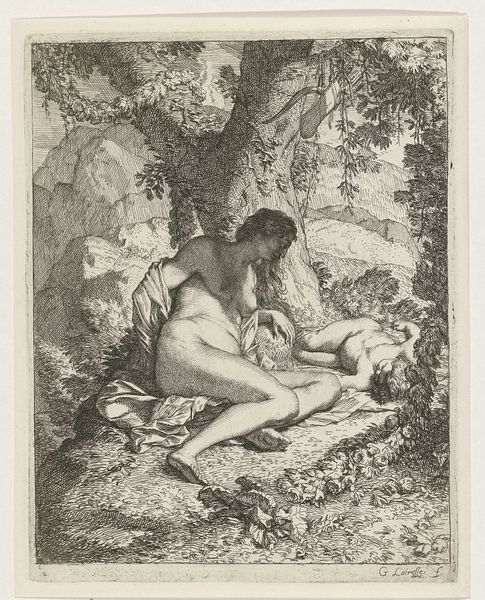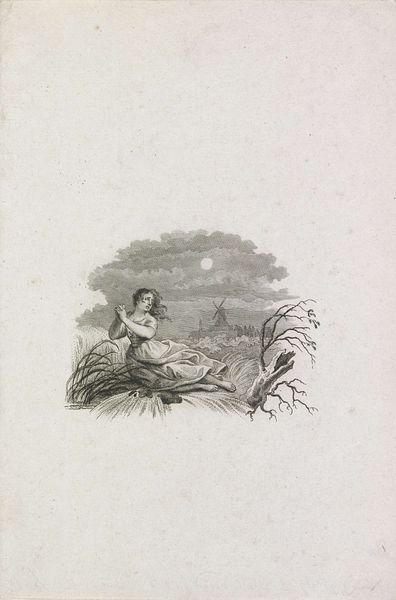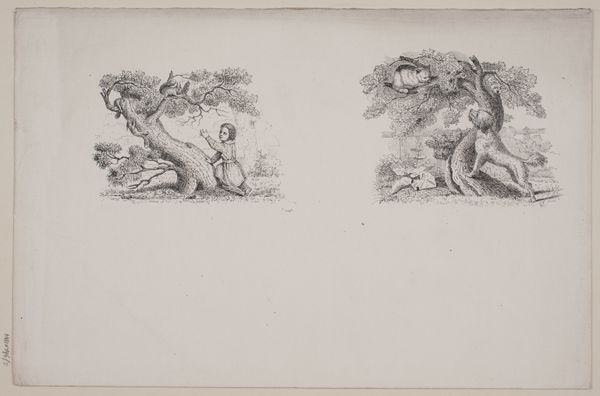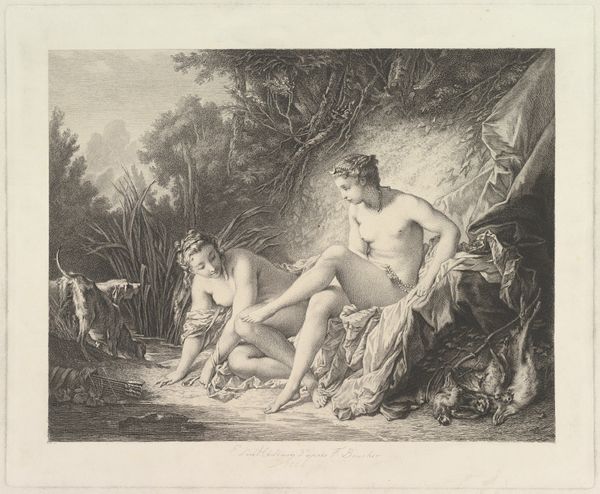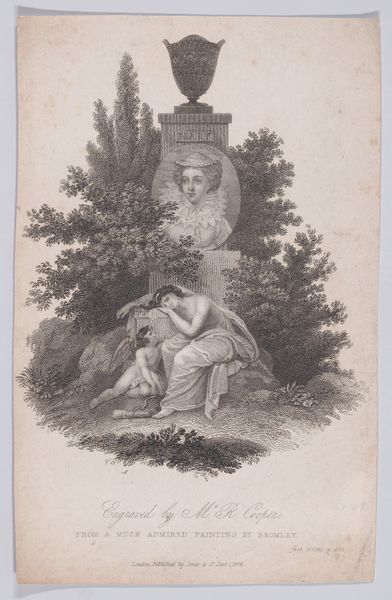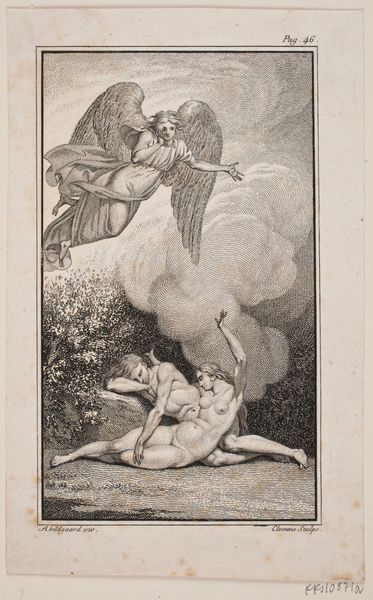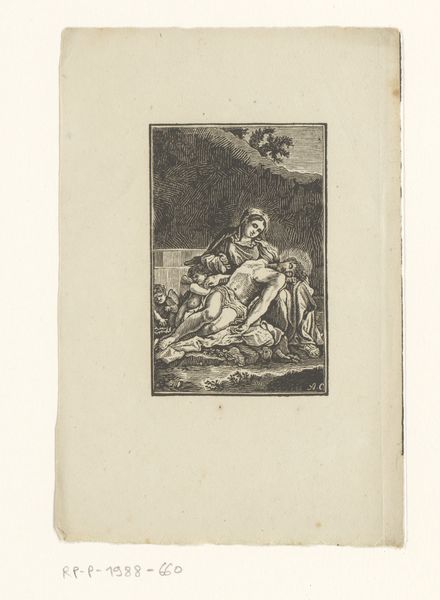
drawing, print, etching, engraving
#
drawing
# print
#
etching
#
landscape
#
pencil drawing
#
genre-painting
#
engraving
Dimensions: Sheet: 4 5/8 × 3 7/8 in. (11.7 × 9.8 cm)
Copyright: Public Domain
Editor: Here we have an etching and engraving titled "Trade Card," created by an anonymous artist sometime between 1800 and 1900. It features a cherubic figure drawing in a landscape, and I’m immediately struck by the almost idyllic, romantic quality of the scene. What social commentary, if any, do you believe this work offers? Curator: That "idyllic" quality, I think, demands a critical reading. The presence of the cherubic figure—likely a representation of artistic inspiration or perhaps even colonial innocence—within a seemingly untamed landscape, forces us to question whose "idyll" is being depicted and at what cost. Considering the era, do you see echoes of the colonial gaze shaping the narrative here? Editor: I hadn’t considered the colonial aspect. It’s interesting that you point out the landscape –almost like a ‘new eden’ waiting to be ‘civilized.’ Curator: Precisely. The romantic framing could serve to naturalize, and thereby legitimize, the exploitation of land and labor. Consider the implications of a “blank slate” both in the cherub's drawing and the open space to the right; it's inviting inscription, right? Who gets to write that story, do you think, and whose narratives are erased in the process? Editor: So, what might have seemed like a simple, charming image is actually layered with potential meanings about power dynamics. Curator: Absolutely. Furthermore, "trade" itself should trigger questions of how commerce intertwines with historical systems of oppression, race, gender, and class. The very nature of “trade” involved in the artwork also forces us to examine who benefits. This perspective shifts how we value and understand these works in galleries, doesn't it? Editor: It completely reframes it. Thanks, it’s given me a lot to think about regarding the relationship between art, commerce, and social narratives.
Comments
No comments
Be the first to comment and join the conversation on the ultimate creative platform.
